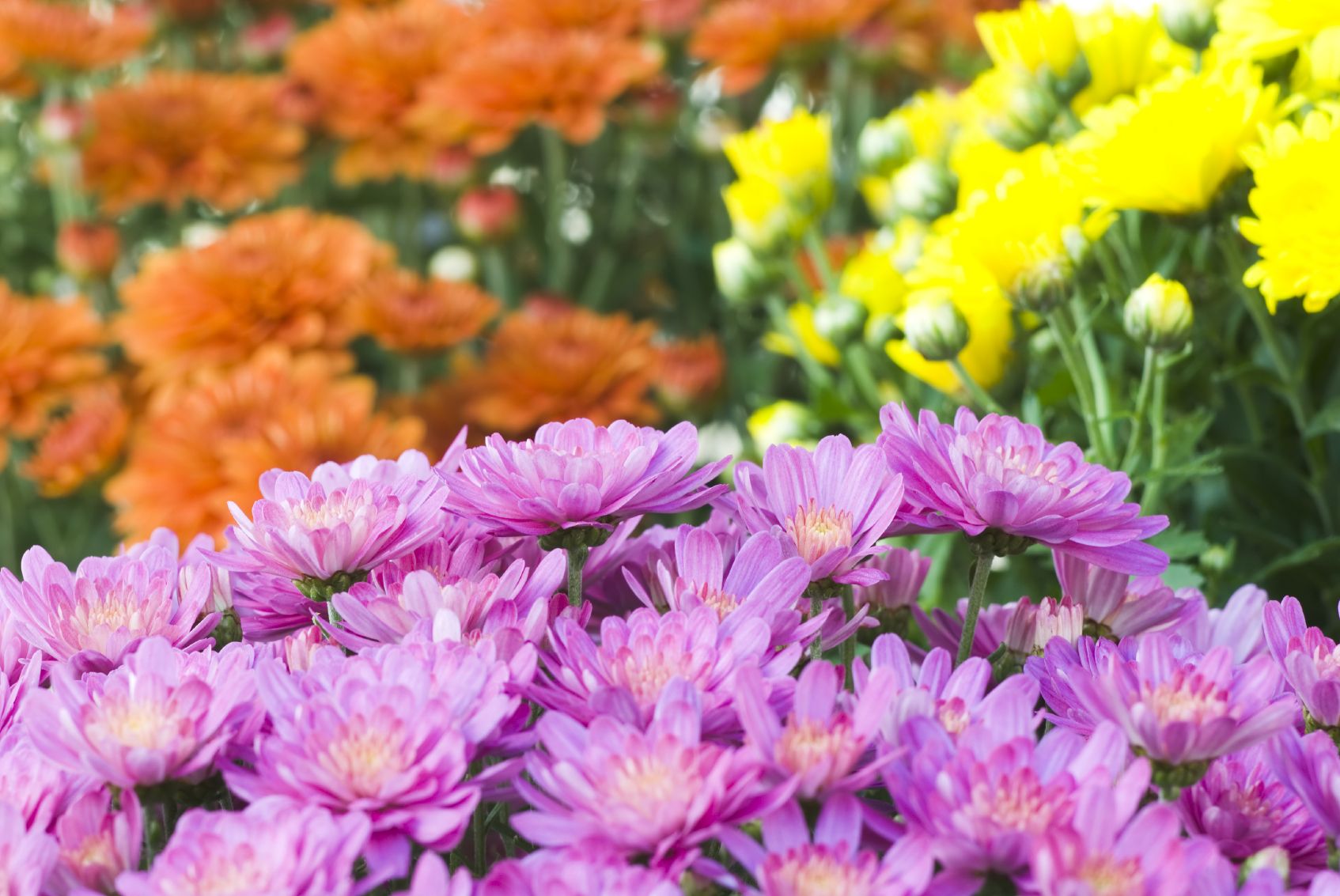A History of Garden Chrysanthemum Flowers
Are you interested in the history of garden Chrysanthemum flowers? It’s an exciting story, involving legend and factual truth. Read on!
 |
|
These colorful Mum's were said to have originated with the Japanese, and then moved to the Dutch and French.
|
Legend has it that the original “golden daisies of the Orient” were washed ashore on an island in the Japanese archipelago centuries ago. The flowers, China's most valuable possession, were carried by 12 maidens and 12 boys who were to trade the mums for the herb of youth to save their revered emperor.
Finding the island uninhabited, the travelers settled down to build an empire and plant the mums. As legends often contain elements of truth, the story puts the birthplace of mums in China and explains the tradition where mums for centuries were the exclusive possession of the Japanese emperor.
Even today, when the Japanese say "kiku"—or chrysanthemum—they are as likely to be referring to the imperial crest of their emperor as to the flower. The royal symbol, with its traditional chrysanthemum design, and the flower have long been synonymous. Annual chrysanthemum festivals are celebrated in communities throughout Japan each fall much on the scale of the Oktoberfest in Germany and other harvest festivals.
History indicates that the first chrysanthemums to reach Europe were probably introduced by Dutch explorers during the 18th century. While records show that one half-dozen mum varieties were grown in Holland during this period, it was the agriculturally minded French Huguenots who imported a variety of forms from the Dutch and developed Old Purple, one of the basic mums of European gardens.
Other French gardeners, improving on the Chusan daisy brought to Europe by Robert Fortune, one of England's great plant hunters, named their flower form a pompon because it reminded them of the wool pompons on their soldiers' hats. Pompons remain a popular chrysanthemum flower form today.
The Old Purple chrysanthemum was introduced to the Americas in 1798 by John Stevens, a Hoboken, New Jersey, nursery man. The Chusan daisy was well established by 1850 and the Chrysanthemum Society of America was founded and held its first exhibit in 1902.
The turning point came in the 1930s and 1940s when the scientific world discovered that fall-blooming chrysanthemums could be made to flower year-round by manipulating daylight hours. By shortening daylight hours to simulate the coming of fall, chrysanthemums can be made to flower just as they do in nature at that time of year.
Today, mums are a great way to add color to any garden, and are one of the most popular flowers in the world, next to the rose. Head into Gertens and pick up your mums today! There are a number of colors and varieties to complement your fall landscape.
